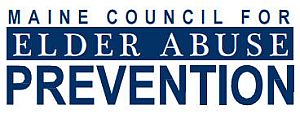Steps to Starting an Elder Abuse Task Force
-
Step One: Identify and invite core partner organizations to a meeting.
It is recommended that the core group includes:
- Legal Services for Maine Elders
- Local Area Agency on Aging
- Local domestic violence agency
- Local sexual assault agency
- Local law enforcement including sheriff
- Adult Protective Services
- District Attorney's Office (victim's witness advocate)
Invite other partner organizations in future (see sample invitation letter):
- Transportation agency
- Local housing authorities
- Credit Unions/banks
- Health care workers
- Community Action Program
- Clergy
- Town/City officials (General Assistance)
- Other local non-profits working with elderly
-
Step Two: Schedule initial meeting to address:
- Who will be the group chair and how will it rotate? Duties of the chair to include:
- Meeting facilitator
- Creating and circulating an agenda (see sample first meeting agenda)
- Keeping and circulating minutes
- Sending meeting reminders
- Establish meeting place and schedule of meetings
- Identify other community partners to invite to participate (see above list)
- Discuss purpose of the group and draft mission statement: what will be the mission of this group? Education? Awareness? Service provision? Training? MDT case review?
- What other task forces or collaborative groups may already meeting regularly and how will this effort fit in with those other activities?
Example: The Androscoggin County Elder Abuse Task Force is a community partnership dedicated to ending elder abuse, generating resources, educating the community, and advocating to meet the needs of elder abuse victims. The ACEATF works to achieve this mission by providing educational programming for older people and service providers, and raising awareness of the issue in the larger community through a variety of projects.
- Who will be the group chair and how will it rotate? Duties of the chair to include:
- Step Three: Second meeting discussion
- Review/revise/accept draft mission statement
- What needs are present for abuse survivors in your local area?
- What resources are already available?
- What are the barriers to providing support?
- What actions could this group take to facilitate better support?
-
Step Four: Establish First Year Goals and Organizational Structure
Some Examples of goals:
- Partner organizations understand services/resources offered by other partner organizations
- Coordinate joint outreach efforts (arrange outreach event) with partner organizations
- Awareness activities for Elder Abuse Awareness Day (June 15)
- Step Five: Future Goals/ Activities
- Arrange outreach event
- Senior Resource Fair in recognition of World Elder Abuse Awareness Day (see sample sponsor letter)
- Other educational trainings for service providers (Making the Case: Justice for the Elderly, Powerpoint presentation on elder abuse for live training or as CD or online training)
- Ongoing learning about partner organizations and services they offer
- Collaboration and study of difficult cases
- Resource Guide for older adults
- See sample brochure about being safe
